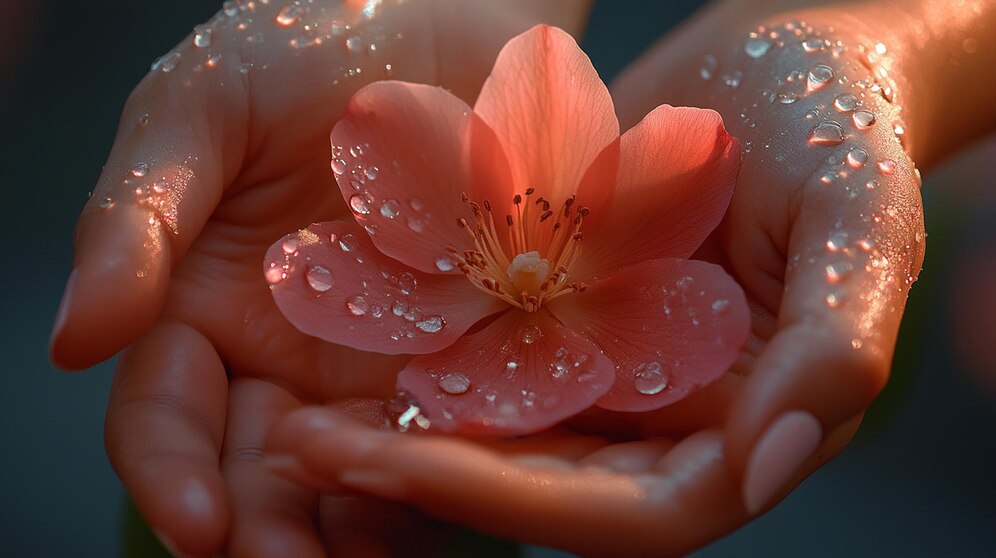This blog post delves into the captivating world of floral aesthetics, highlighting how flowers enhance beauty and emotion in various settings, from weddings to home decor. It emphasizes the importance for floral enthusiasts and event planners to master this art, transforming ordinary spaces into extraordinary realms of wonder.
The Art and Science of Floral Design
The splendor of floral aesthetics lies in its intricate dance of art and science. At its core, floral design is about mastering various design principles to create visually pleasing compositions. Balance, harmony, contrast, and proportion play pivotal roles in guiding floral artists toward perfection. These elements help to create arrangements that are both striking and serene, capturing the viewer’s attention while soothing the soul.
Color, texture, and shape further elevate the aesthetic appeal of floral pieces. Color is often the first visual cue that draws us in, with vibrant hues and gentle pastels evoking a spectrum of emotions. The texture adds depth, inviting us to explore the arrangement with our senses. Meanwhile, shape guides the eye, leading us on a visual journey through curves, angles, and flowing lines. Together, these elements create a symphony of beauty that reflects the artistry of the floral designer.
Incorporating these principles into your floral creations ensures not only their visual appeal but also their emotional resonance. Whether you’re crafting a centerpiece for a dinner party or designing an elaborate display for a wedding, these foundational aspects will guide your hand.

Popular Floral Styles and Their Significance
Floral aesthetics and floral arrangements are as diverse as they are beautiful, with various styles to suit different tastes and occasions. Classic designs often embody timeless elegance, featuring symmetrical compositions and traditional colors. These styles are perfect for formal events and settings, where their understated beauty can shine.
In contrast, modern floral aesthetics push boundaries and explore new horizons. Minimalist arrangements focus on simplicity and clean lines while incorporating unusual elements for a contemporary twist. These designs are ideal for chic events and urban spaces, where their bold statements resonate with the environment.
Avant-garde floral styles take creativity to the next level, challenging conventions with their dramatic and imaginative interpretations. These designs often incorporate unconventional materials and innovative techniques, making them perfect for artistic and experimental settings. By understanding the significance and application of each style, you can select the perfect aesthetic to complement any event or space.
Sustainability in Floral Aesthetics
In today’s world, sustainability is a key consideration in all aspects of design, including floral aesthetics. Eco-friendly practices not only contribute to a healthier planet but also enhance the beauty and longevity of your floral creations. By choosing locally sourced flowers and materials, you reduce the carbon footprint of your designs while supporting local growers.
Incorporating sustainable techniques can also lead to stunning results. For example, opting for seasonal blooms ensures that your arrangements are fresh and vibrant. You can also explore alternative materials, such as recycled containers and biodegradable floral foam, to create environmentally responsible designs.
Sustainable floral aesthetics invite creativity and experimentation, encouraging us to think beyond traditional practices. By adopting these methods, you not only craft beautiful designs but also contribute to a more sustainable future for our planet.

Floral Aesthetics in Cultural Context
The world of floral aesthetics is rich with cultural significance, as flowers have held symbolic meanings across different societies for centuries. In various cultures, flowers are used to convey messages, express emotions, and celebrate rituals. Understanding the cultural context of floral aesthetics allows you to create designs that resonate with deeper meanings.
For example, cherry blossoms hold special significance in Japanese culture, symbolizing the transient nature of life. In India, marigolds are often used in celebrations and religious ceremonies due to their vibrant colors and auspicious symbolism. By incorporating culturally significant flowers into your designs, you can honor traditions and create meaningful connections.
Exploring the cultural context of floral aesthetics expands your creative horizons and deepens your appreciation of the art form. It invites you to experiment with new ideas and discover the beauty of diverse floral traditions.

DIY Floral Aesthetics
Creating stunning floral aesthetics at home can be a rewarding and enriching experience. With a few simple tips and techniques, you can achieve professional-looking results that bring joy and beauty to your space. Start by selecting a variety of flowers and materials that align with your chosen color palette and style.
The right tools can make all the difference in your floral endeavors. Invest in quality scissors, floral tape, and wire to ensure precision and ease in your creations. Additionally, familiarize yourself with basic techniques, such as cutting stems at an angle and conditioning flowers to extend their lifespan.
Practicing your skills and experimenting with different ideas will build your confidence and hone your aesthetic sensibilities. Over time, you’ll develop a unique style that reflects your personality and passion for floral design.
Conclusion
Now that you have a deeper understanding of the various aspects that contribute to floral aesthetics, you can embark on your own journey of creative exploration. Whether it’s incorporating sustainability practices, delving into cultural significance, or perfecting your DIY skills, there is always room for growth and improvement in this ever-evolving art form.







